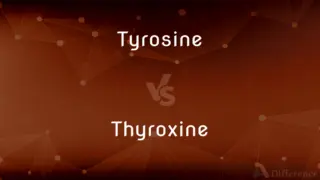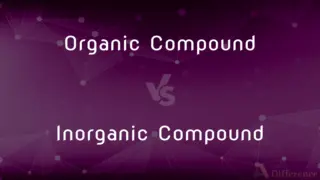Cashpoint vs. Atm — What's the Difference?
By Maham Liaqat & Urooj Arif — Updated on March 29, 2024
A cashpoint and ATM refer to the same device, used for withdrawing cash and performing financial transactions, differing primarily by regional language use.

Difference Between Cashpoint and Atm
Table of Contents
ADVERTISEMENT
Key Differences
The term "cashpoint" is predominantly used in the UK and some Commonwealth countries to describe what is universally known as an Automated Teller Machine (ATM). Both devices allow users to withdraw cash, check their account balances, and perform other financial transactions without needing to visit a bank branch. ATMs are found worldwide and are known by various names, including "cashpoint," but their functionality remains consistent across different regions. They serve as electronic banking outlets that provide customers with convenient access to their financial accounts.
The technology behind both ATMs and cashpoints is the same, involving secure access typically through a magnetic stripe or chip card, and personal identification number (PIN) for authentication. This ensures that transactions are secure and accessible only to the cardholder.
While the term "cashpoint" is a trademark owned by Lloyds Bank in the UK, it has become a generic term used colloquially to refer to ATMs in the region. On the other hand, "ATM" is the more universally recognized term that is used globally.
Despite the difference in terminology, the primary function of providing customers with 24/7 access to banking services remains the core purpose of both ATMs and cashpoints. This includes withdrawing cash, depositing funds, transferring money between accounts, and obtaining account information.
Comparison Chart
Terminology
Used primarily in the UK and some Commonwealth countries.
Universal term used globally.
ADVERTISEMENT
Ownership
Trademark owned by Lloyds Bank in the UK.
No trademark ownership; a generic term.
Functionality
Withdraw cash, check balances, perform financial transactions.
Identical to cashpoint in functionality.
Accessibility
Intended for bank customers for 24/7 access to accounts.
Same as cashpoint, providing 24/7 access to financial services.
Regional Use
Colloquially used in specific regions.
Widely recognized and used internationally.
Compare with Definitions
Cashpoint
A UK term for an ATM.
I need to stop by the cashpoint to withdraw some money.
Atm
Automated Teller Machine for financial transactions.
The ATM at the mall allows me to check my account balance.
Cashpoint
Allows for cash withdrawals and banking transactions.
The cashpoint outside the supermarket is convenient for quick cash.
Atm
Universal banking tool for cash withdrawals.
ATMs make it easy to get cash while traveling internationally.
Cashpoint
Part of the modern banking system.
Cashpoints have become an integral part of our daily financial transactions.
Atm
Requires a secure authentication process.
For security, ATMs require a PIN for all transactions.
Cashpoint
Secure access with a card and PIN.
Always cover the keypad at the cashpoint when entering your PIN.
Atm
Essential for global financial access.
ATMs are a cornerstone of global financial infrastructure, offering widespread access to funds.
Cashpoint
24/7 banking convenience.
Cashpoints offer the convenience of accessing your funds at any time.
Atm
Accessible banking round-the-clock.
ATMs provide 24/7 access to banking services, even on holidays.
Cashpoint
An ATM.
Atm
An unattended electronic machine in a public place, connected to a data system and related equipment and activated by a bank customer to obtain cash withdrawals and other banking services.
Cashpoint
An automated teller machine.
Atm
A unit of pressure: the pressure that will support a column of mercury 760 mm high at sea level and 0 degrees centigrade
Atm
A means of digital communications that is capable of very high speeds; suitable for transmission of images or voice or video as well as data;
ATM is used for both LAN and WAN
Atm
An unattended machine (outside some banks) that dispenses money when a personal coded card is used
Common Curiosities
Are cashpoints and ATMs different in terms of functionality?
No, cashpoints and ATMs provide the same functionality, including cash withdrawals, balance inquiries, and other financial transactions.
Can cashpoints or ATMs run out of money?
Yes, cashpoints and ATMs can run out of money, especially during high-demand periods. They are regularly restocked to ensure availability.
Are there any security differences between using a cashpoint and an ATM?
No, the security measures for using both cashpoints and ATMs, like encryption and PIN protection, are universally applied to protect users' information.
What should I do if a cashpoint or ATM retains my card?
If an ATM or cashpoint retains your card, contact your bank immediately to report the incident and secure your account.
How do ATMs and cashpoints contribute to modern banking?
ATMs and cashpoints provide essential 24/7 access to banking services, enhancing convenience and accessibility for customers worldwide.
What technological advancements have been made in ATM and cashpoint security?
Technological advancements include biometric authentication, advanced encryption methods, and fraud detection algorithms to enhance the security of transactions at ATMs and cashpoints.
Is there a charge for using an ATM or cashpoint?
Charges for using ATMs or cashpoints can vary depending on the bank, the type of account, and the location of the machine. Some transactions may incur fees, especially at ATMs not affiliated with your bank or in foreign countries.
Why is it called a cashpoint in the UK?
The term "cashpoint" is derived from a trademark owned by Lloyds Bank in the UK but has become a colloquial term for ATMs in the region.
Can I use my bank card at any ATM or cashpoint worldwide?
Yes, most bank cards are accepted at ATMs worldwide, though fees may apply for international transactions.
Can I deposit money at a cashpoint or ATM?
Yes, many ATMs and cashpoints offer the functionality to deposit money, although the availability of this service can vary by location and bank.
How has the role of ATMs and cashpoints evolved with digital banking?
Despite the growth of digital banking, ATMs and cashpoints continue to play a critical role in providing physical access to banking services, complementing online and mobile banking options.
How did ATMs become known as cashpoints?
"Cashpoint" became a popular term in the UK due to branding and widespread use, evolving into a generic term for ATMs in that region.
How do I find the nearest ATM or cashpoint?
Most banks offer mobile apps with features to locate the nearest ATM or cashpoint, and there are also independent apps and websites that provide this information.
What future innovations are expected for ATMs and cashpoints?
Future innovations may include more advanced security features, integration with mobile and digital banking, and expanded services beyond traditional banking transactions.
Are there any alternatives to using an ATM or cashpoint for accessing cash?
Alternatives include cash back options at retail checkouts, bank teller transactions, and peer-to-peer payment apps that allow you to transfer funds to friends who can provide cash.
Share Your Discovery

Previous Comparison
Iron vs. Silver
Next Comparison
Rationale vs. ReasonAuthor Spotlight
Written by
Maham LiaqatCo-written by
Urooj ArifUrooj is a skilled content writer at Ask Difference, known for her exceptional ability to simplify complex topics into engaging and informative content. With a passion for research and a flair for clear, concise writing, she consistently delivers articles that resonate with our diverse audience.
















































